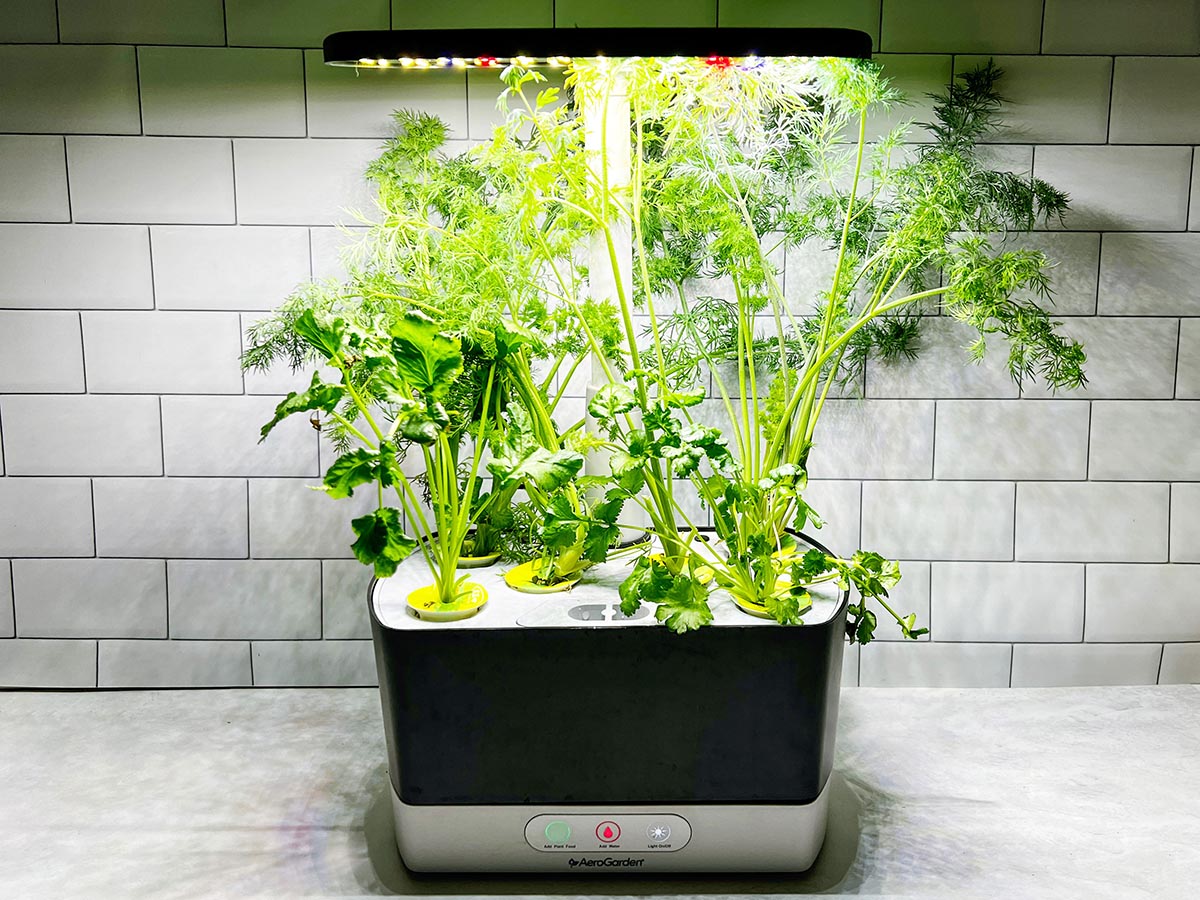We may earn revenue from the products available on this page and participate in affiliate programs. Learn More ›
I’ve always had a negative opinion about hydroponic gardening. To me, hydroponically grown produce tasted bland and required more work than gardening outdoors in raised containers or in the ground. However, after my second book, Crafting with Herbs, was released, a PR rep contacted me about testing an AeroGarden Harvest for growing herbs. Though initially apprehensive, I did a bit of research on the product and decided to give it a go because it seemed simple to use. I figured that perhaps this system might be a good way to grow basil during the winter.
After growing two rounds of herbs in the winter of 2020, I was very impressed. Unlike most home hydroponic systems, AeroGarden systems do not require the complex balancing of fertilizers and pH monitoring. I was able to get started in under 10 minutes, and I reaped plants in as little as a month. I’ve used several AeroGardens over the last 3 years to cultivate an array of herbs, leafy greens, flowers, and vegetables, so it’s safe to say these systems have really grown on me!
AeroGarden Harvest: At a Glance
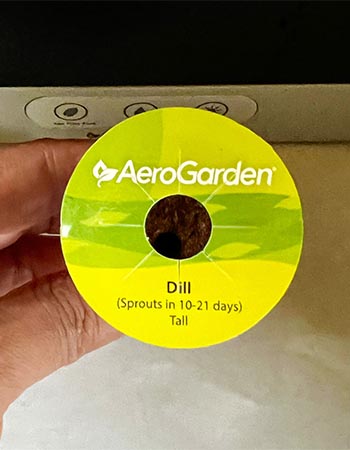
Rating: 9.5/10
PROS
- Simple to start, use, and maintain through the plant’s growing cycle
- LED indicators on the front of the machine alert users to low water and nutrient levels
- Comes with a starter seed kit that has reusable components and fertilizer
CONS
- Limited vertical space requires consistent pruning of taller plants to keep them clear of LED lights
- Hand pollination process can be a bit challenging to get just right
Get the AeroGarden Harvest indoor garden at:
What is the AeroGarden Harvest?
AeroGarden is an indoor gardening system that uses hydroponics to replace soil with water as the growing medium. The Harvest model is a midsize system that can grow up to six plants. It’s a space-efficient unit that fits easily on a kitchen counter or desk.
The Harvest features a lower water reservoir with three LED controls at the bottom. It has a removable grow deck with six holes for the planting pods. It also has an attached adjustable overhead grow light panel with 20-watt full-spectrum LED grow lights. The Harvest features an automatic timer that ensures the lights turn on and off at the correct times, and the backlit buttons remind the gardener to add water and plant food. Each model is typically sold as a bundle, and shoppers can choose whether to order an herb, vegetable, or flower seed kit. However, any seed kit can also be purchased separately.

How easy is it to set up an AeroGarden Harvest?
The AeroGarden Harvest requires minimal assembly. Once it was unpacked, I was able to put the system together quickly. To get started, all the user needs to do is fill the water reservoir with tap water just below the integrated pump. The fertilizer bottle indicates how much fertilizer to add to the reservoir at startup and every 2 weeks while the plants grow.
The seed pack and pods’ instructions offer ample helpful information to get started. The pods are cone-shaped peat pellets with several seeds glued into the medium. The peat pod sits in a reusable plastic basket. Each plant pod is categorized as short, medium, or tall; for optimal growth, it’s a good idea to place the taller plants in the back row. The plant pods also inform users about average germination times. Each plant pod has a small humidity dome to place over the opening to help keep it moist during germination.
All the gardener needs to do is insert a pod into one of the six openings in the growing deck. The light starts in the lowest position, closest to the growing deck. I found that it’s best to set the light in the morning because it will automatically stay on for 15 hours. This was easy to do by pressing and holding each button (light, water, and plant food) for a few seconds. The button starts to blink rapidly, then the user can reset the timer. The plant food timer will send an alert in 2 weeks when it’s time to add more fertilizer. When the water level is too low, the water level indicator will blink.
How easy is it to maintain the hydroponic growing system?
AeroGarden’s automatic timers make the Harvest easy to maintain. The button lights will remain green, blue, and white when food and water levels are correct, and when the garden needs plant food or water, they’ll flash red. The blue water light, for instance, will flash red when water is needed, then stop flashing once water is added. The green plant food light will start flashing every 14 days or so whenever plant food needs to be added. Once fertilizer or water has been added, all the user needs to do is tap the leaf or water button to reset.
As the plants grow, users must manually raise the light deck to keep the plants at least an inch away from the light. Fortunately, I’ve found that the light deck easily slides up with little effort. As the plants grow, water will need to be added several times a week—their longer root systems use up water at a faster pace. Depending on growth, it’s a good idea to prune regularly and also hand pollinate as needed. This process of transferring pollen from male flowers to the stigma of female flowers can be done with a cotton swab or the pollinating tool AeroGarden sells separately.
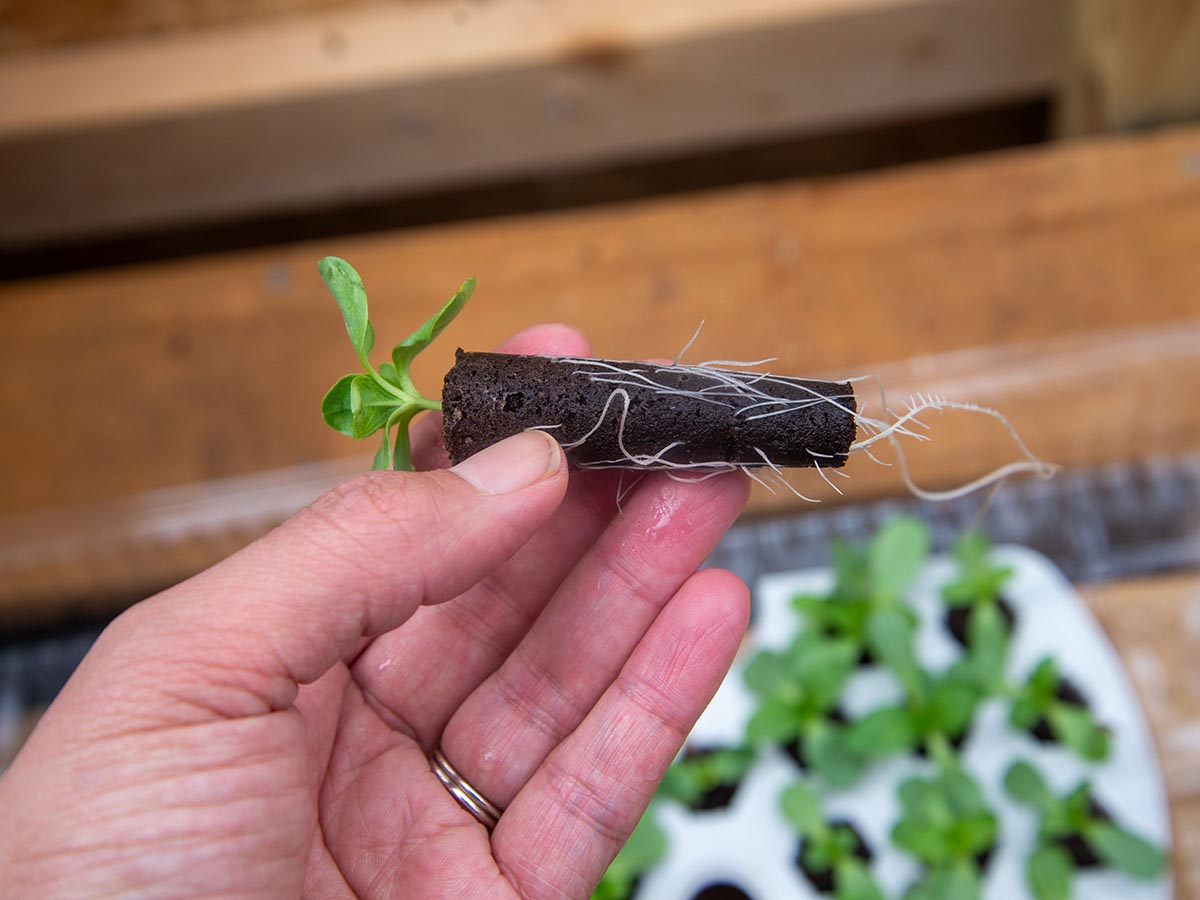
What can you grow in an AeroGarden Harvest?
The AeroGarden systems can grow several types of vegetables, including peppers and tomatoes, herbs, leafy greens such as lettuce, and flowers. Smaller varieties, like cherry tomatoes, work best. While root vegetables and larger produce like eggplant can’t be grown in an AeroGarden due to lack of space, users can start seeds in the AeroGarden for transplanting out to a container or in-ground garden.
I primarily use the Harvest to grow herbs and start transplants for my outdoor garden. I have tried growing chili peppers, tomatoes, and flowers, but I found hand pollination to be a bit tricky to get exactly right. I used the pollinating tool AeroGarden sells, but I got mixed results. I also grew head lettuce in my Harvest, which did extremely well—too well, however, since I quickly ran out of growing room. Recently, I tried AeroGarden’s microgreens kit, which allows me to harvest mini greens in less than a week! I grew broccoli, kale, radish, and beet microgreens. They are delicious on top of sandwiches or eaten as salad greens.
Overall, I think the AeroGarden Harvest shines when growing leafy greens and when it’s used as a seed starter. I exclusively start all my seeds in the Harvest using the seed starting system. After years of starting seeds utilizing horticulture heat pads, humidity domes, and grow lights, I love that the Harvest can do the same job with a smaller footprint and less effort. However, the Harvest is too small to make growing tomatoes, peppers, head lettuce, or flowers worth the effort. For those plants, it’s best to use one of the larger models, such as the Harvest XL or the Bounty.
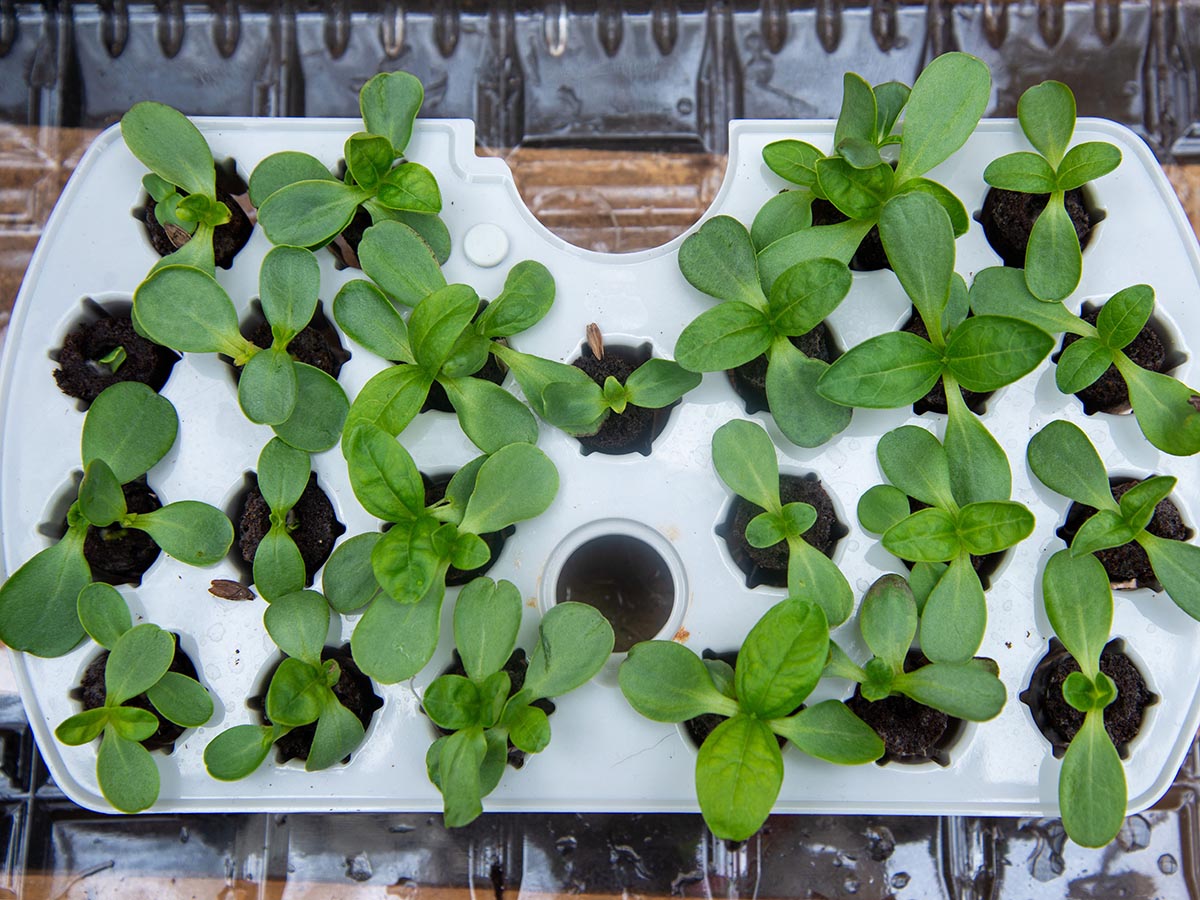
Do vegetables grown in the AeroGarden taste good?
In my experience, nothing can mimic the taste of sun-ripened tomatoes, so I found that vegetables grown in an AeroGarden taste much like hydroponically grown produce from a store—not bad, just a bit bland. That’s the main reason I stick to growing greens and herbs with my AeroGarden. Basil and dill, in particular, grow remarkably well and taste great.
I have had mixed results with lettuce. Some batches in the past have tasted bitter, but I suspect it had to do with the quality of the water I used. I typically use tap water, but I had better results (taste-wise) with lettuce when I used filtered water. Microgreens and herbs have always tasted fine when I’ve grown them with tap water.
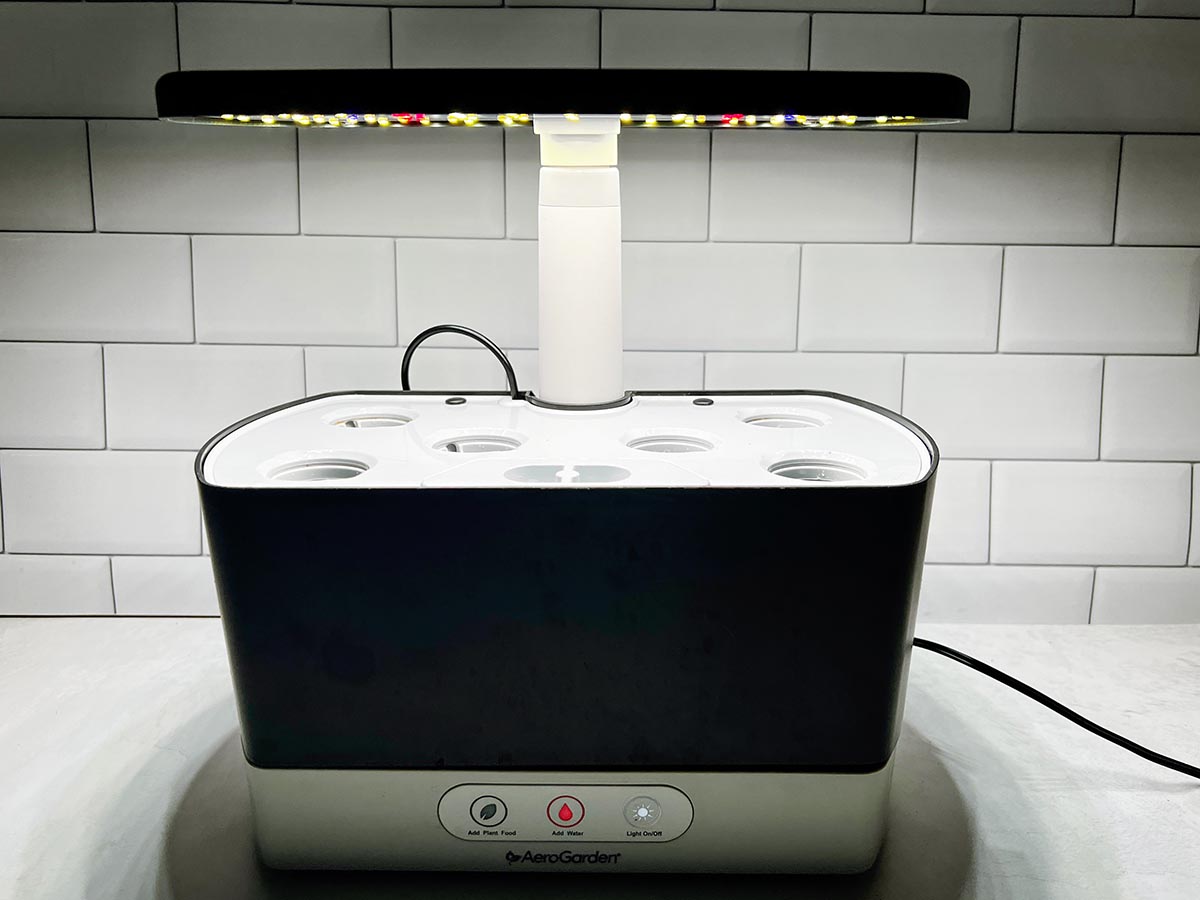
Is the AeroGarden Harvest right for you?
The Harvest is a worthwhile investment for those who lack outdoor space or want fresh herbs and leafy greens year-round. Those who want to take indoor gardening to the next level might want to try the Harvest XL or the Bounty. You can use any seeds for leafy greens, herbs, and microgreens in the AeroGarden, and it’s possible to start just about any type of vegetable for transplanting outdoors, too. I’ve started onions, cabbages, and large tomato varieties in my Harvest and had great results.
I love that AeroGarden seed kits don’t need to be used exclusively. Peat pod refills are sold separately, and third-party pods work in the system, too. You’ll want to be sure to save the baskets and humidity domes from the startup kit to reuse later, though. Once you see how easy and addicting it is to grow fresh produce in an AeroGarden, it’s likely you’ll want to get several!
Where to Buy the AeroGarden Harvest
Get the AeroGarden Harvest indoor garden at:
Meet the Tester
Debbie Wolfe is a photographer, author, and freelance writer in various niches. She has contributed hundreds of home, garden, and crafting articles and DIY tutorials for leading media outlets and retailers, including HGTV, Real Simple, Forbes Advisor, The Spruce, The Home Depot, Walmart, and Mother Earth News. She is the author of two DIY books: Do-It-Yourself Garden Projects and Crafts and Crafting with Herbs from Skyhorse Publishing. Her testing approach is straightforward and budget-minded.

